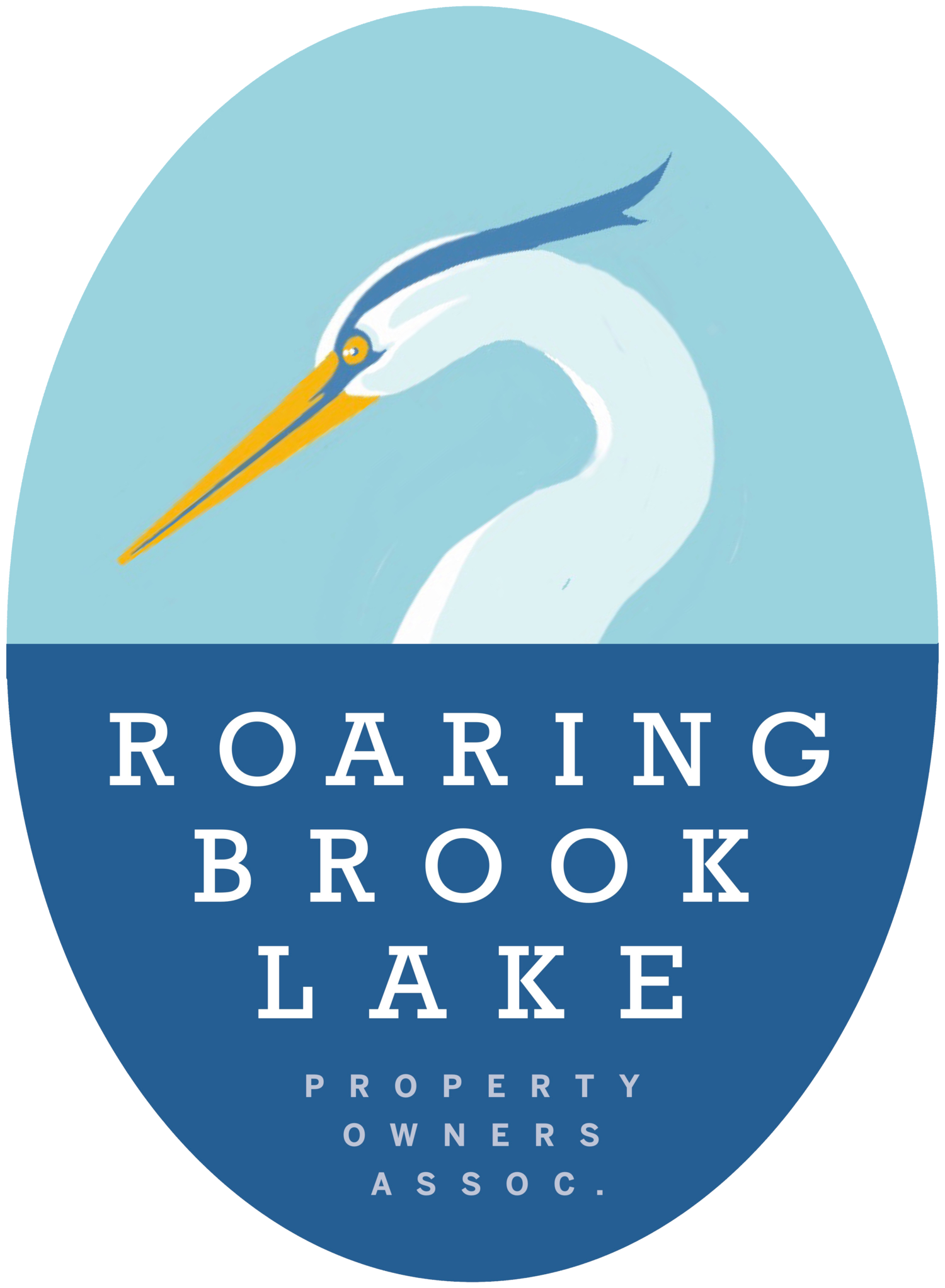Lake Guidelines
We’re all here for our love of Roaring Brook Lake. We follow our lake guidelines so that we can all keep this community healthy and thriving for years to come. Roaring Brook Lake is a private community, and only residents, their families, and guests can use the lake for fishing, boating and swimming. We approach one another with generosity, and we approach strangers or newcomers with the same generosity we expect of one another.
Boat Rules
Boats with electric motors are permitted, but Town law prohibits total battery capacity that exceeds 24 Volts.
All boats must be less than 16 feet in length.
No gas or oil-operated watercraft or vehicles are permitted on the lake —frozen or not.
Every boat must have a visible RBL District boat tags and the registration number clearly displayed on the front of the boat. Apply for a boat tag here.
While in a boat, all children under 12 years of age must wear a life jacket. Each boat must have a life jacket for every adult.
Finally, prevent aquatic hitch-hikers. If you take your boat to another waterbody, be sure to clean, drain, and dry the boat before re-entering RBL.
Beaches
We encourage people to enjoy the easy access to swimming and relaxing along the water. We ask that everyone picks up any trash and leaves the beaches as clean—or cleaner— than they found them. Town law does not allow dogs, fires, alcohol, or smoking on the beaches. We are considerate of our neighbors. Children’s Beach has a maximum capacity of 50 people. The other beaches – Park, Spur, and Moon – accommodate up to 25 people. During the summer, each of our beaches has a lifeguard during peak hours. See locations and hours here.
Boat Launches
The boat launches are non-swimming public areas, where you can picnic, relax, or, in fact, launch your boat. Each has its own character and some are very beautiful.
Residents with a current boat tag can store their boats in a rack at one of the beaches or boat launches around the lake. Be considerate of your neighbors. Do not store boats where they will obstruct access to the lake or in the areas where people sit. If you aren’t using your boat, move it to your yard or give it away, so that someone else can use the storage spot. No boats can be stored at Cardiac Beach, and only a very few at Spur Beach. Ideally, every boat should be stored in a boat rack.
Parking at the beaches and boat launches is restricted to property owners, renters, their families, and their guests.
Septic Tanks
Every home on the lake has a septic tank, and many, but not all, have separate leach fields. Learn where they are and learn how to take care of them. The most efficient way to maintain the health of our lake is to maintain the health of our septic systems. Have your septic tank inspected and pumped out every three years. To learn more about septic smarts, read our guidelines here.
Trash and Recycling
Garbage collection for the Roaring Brook Lake District is Monday (including holidays). Put trash for landfills in the large AAA bin.
Recycling is single stream, which means all recyclables, including newspaper, cardboard, plastic, glass bottles and jars, aluminum, junk mail, etc., is placed in a single, separate, bin. You can choose your own recycling bin. Do not put the recycling in plastic bags. Flatten all cardboard boxes. Take lids off jars.
Do not recycle: styrofoam, plastic bags, scrap metal, electronics, light bulbs, glass other than jars and bottles, paper towels, or ceramics.
We have one bulk pick-up day each year, in the autumn. Follow our news alerts to find out when the next bulk pick-up day will be.
Trees in Putnam Valley
The town of Putnam Valley is proud (and protective) of the beautiful trees in our area. Healthy trees prevent soil erosion, control water pollution, absorb carbon dioxide, provide oxygen, and offer a natural barrier to noise and a habitat for wildlife. A permit is required to cut most trees, even those on your own property. If you are not sure, call the Putnam Valley Town Hall before you cut: 845-526-2377.
More details can be found in Part III §161 of the Town Code here.
Lake lowering
Every winter, we lower the water in the lake. It decreases the risk of ice damage to the dam as well as to private property such as docks and bulkheads. Lowering the water allows residents – with permits from the Town – to make needed repairs on in-lake structures.
In addition, lowering the lake has a weed control function. Lake weeds, including our most prevalent invasive plant, Eurasian milfoil, have underground root structures that are normally protected from winter death by the insulating layer of water over the lake bed. When the lake is lowered, significant areas of Eurasian Milfoil may have winter die-off. This winter die-off is dependent on a cold enough period of winter freezing without insulating snow cover.
Lake lowering is a highly contentious subject in the community. Some people dislike having to look at the empty coves. With increasingly warm winters, some people would like to be able to enjoy boating and fishing on a warm January day. Ecological arguments also exist for keeping one lake level all year. The littoral vegetation (plants with their feet in the water and their heads in the air) are a natural part of lake ecology. They provide shelter and habitat for young fish and other creatures. They provide a buffer against wave produced erosion of the shore. (On the other hand, we have very little shore which is not already drastically altered by the presence of lake walls).

